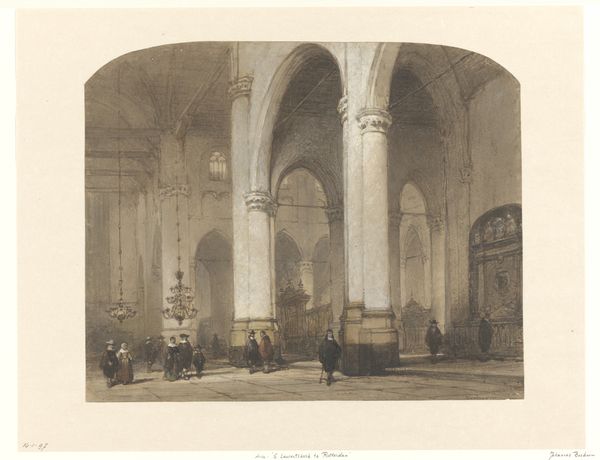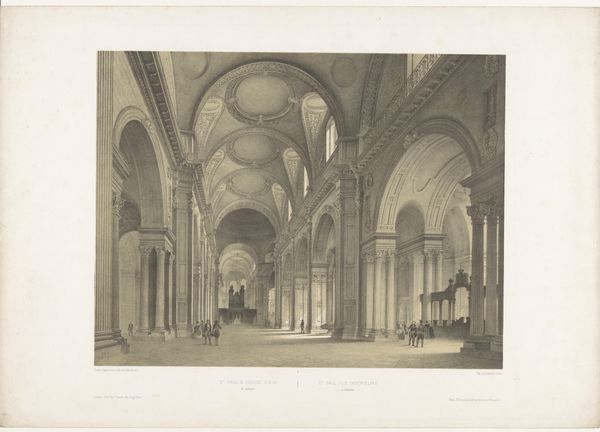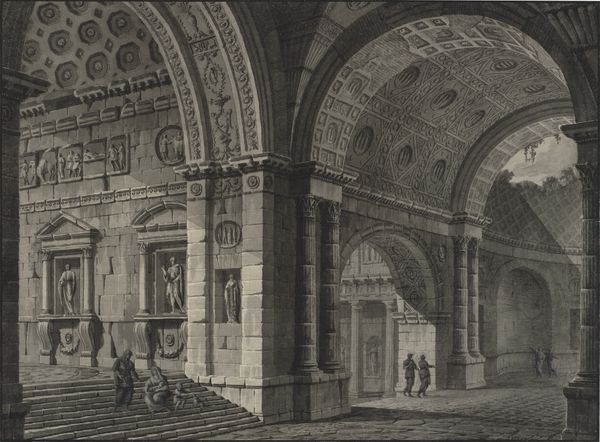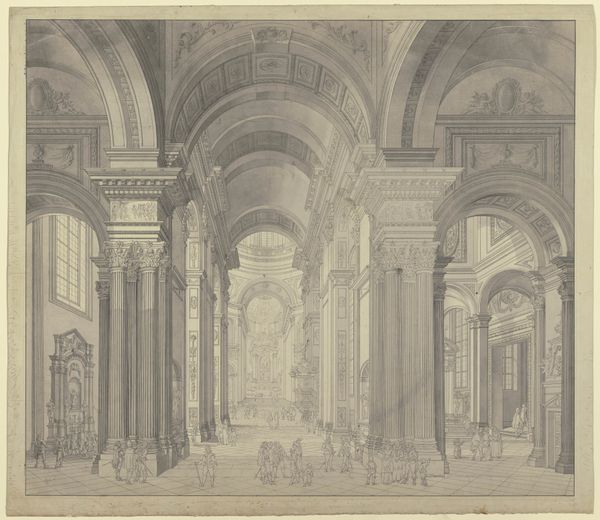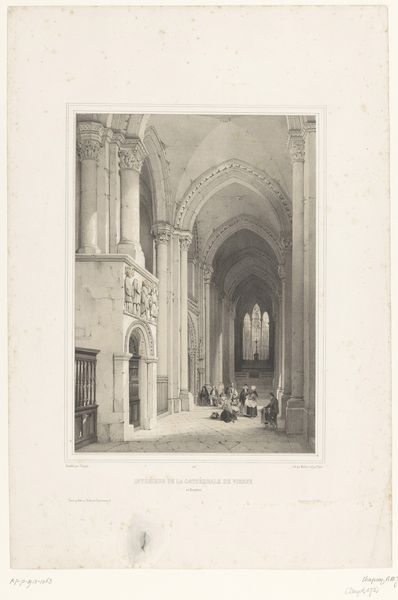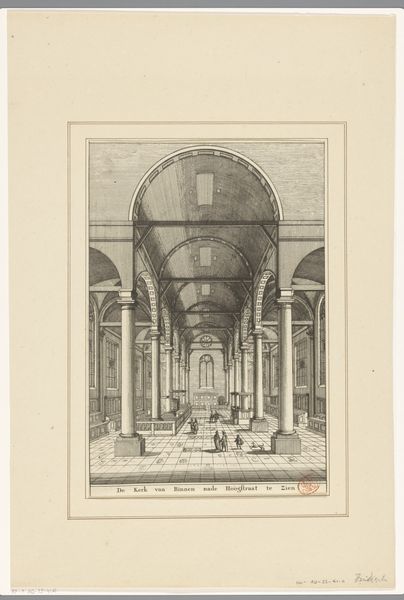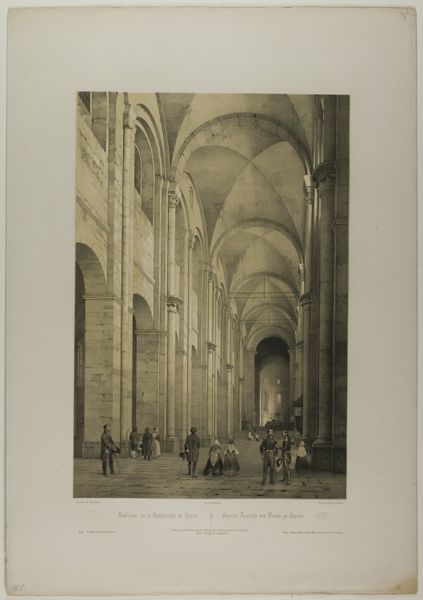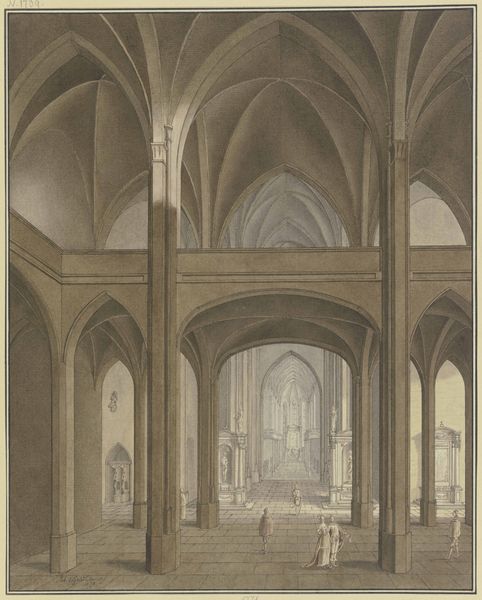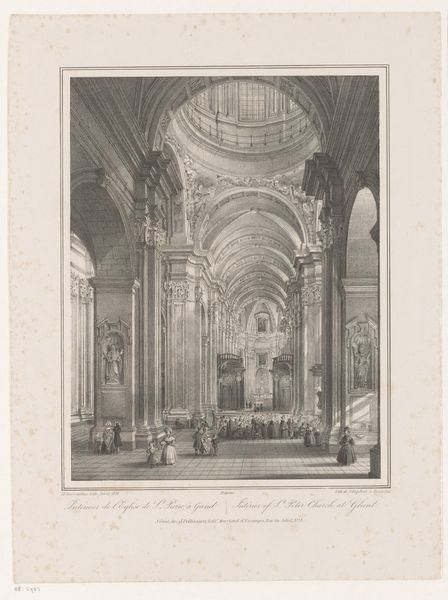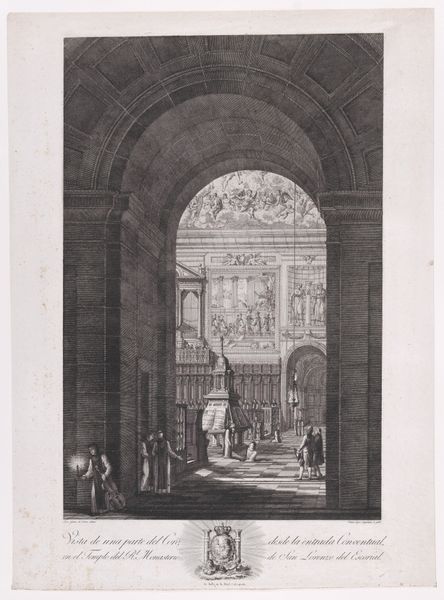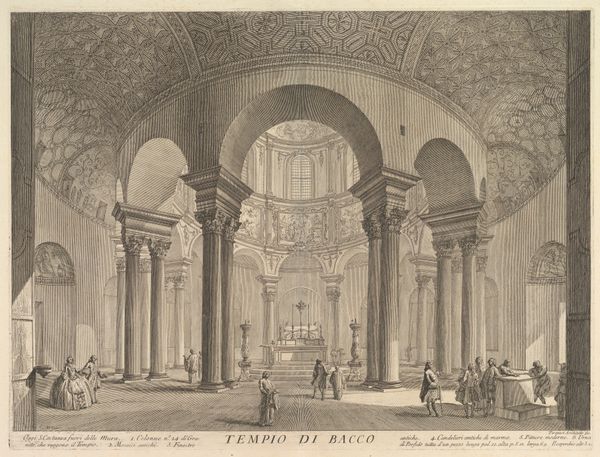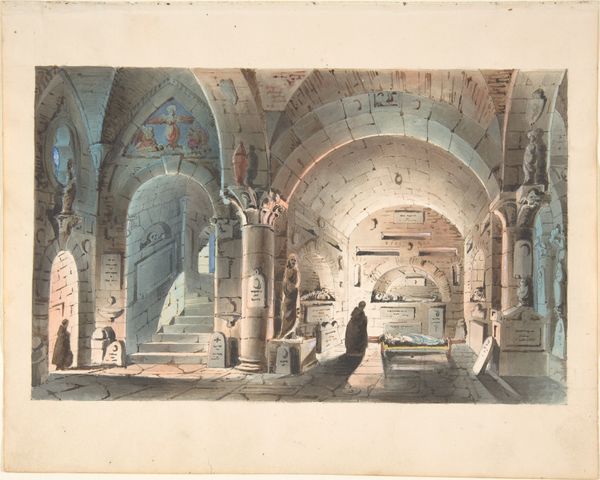
Chapel of Saint Margaret in the City of Nuremberg, from Collection of Memorable Medieval Buildings in Germany 1819
0:00
0:00
Dimensions: 392 × 395 mm (image/text); 475 × 583 mm (sheet)
Copyright: Public Domain
Curator: This is Domenico Quaglio's "Chapel of Saint Margaret in the City of Nuremberg," a lithograph from 1819, part of his collection documenting memorable medieval buildings in Germany. It is currently held at The Art Institute of Chicago. Editor: The way light spills across those gothic arches – it feels like stepping back into hushed reverence, a sacred space humming with secrets! The brown wash really gives it that antique feel. Curator: Indeed, Quaglio’s choice of lithography was quite significant. As a relatively new and affordable medium in the 19th century, it allowed for wider distribution of architectural images, playing a crucial role in shaping the Romantic-era fascination with medieval structures and the growing interest in preserving cultural heritage. Editor: So, accessibility meets a touch of the sublime? I like that. The artist has included small figures here; they're almost engulfed in the setting – I find my eye keeps returning to the contrast between the tiny figures and imposing architecture, the monumentality versus humanity. Curator: It’s a keen observation. Consider the labor involved, though – both in the building of such structures and the careful crafting of the lithographic stone. This print makes explicit the consumption of the idea of Gothic grandeur by the burgeoning middle classes of the era, who are more able to acquire it for domestic viewing via a reproductive printing medium. Editor: I suppose. Yet, gazing at this work ignites something profound – a sense of eternity intersecting with the fragility of human existence. I can almost hear the echoes of chants and prayers within these stone walls. You can romanticise its construction as well. Who really believes in just distribution? What kind of exploitations underpinned its making? Curator: Right! We have to appreciate the interplay between these material and aesthetic qualities of Quaglio's prints and recognise the realities of their making, as much as their impact in spreading the gothic. They can easily be thought of as products embedded in larger economic and social structures. Editor: Fair point. Still, sometimes, just sometimes, it's okay to get lost in the atmosphere, appreciate the artistry and technical skills – and daydream. Thanks for guiding me towards seeing beyond the easy sentiment, though. Curator: Anytime, thanks for your perspective.
Comments
No comments
Be the first to comment and join the conversation on the ultimate creative platform.

